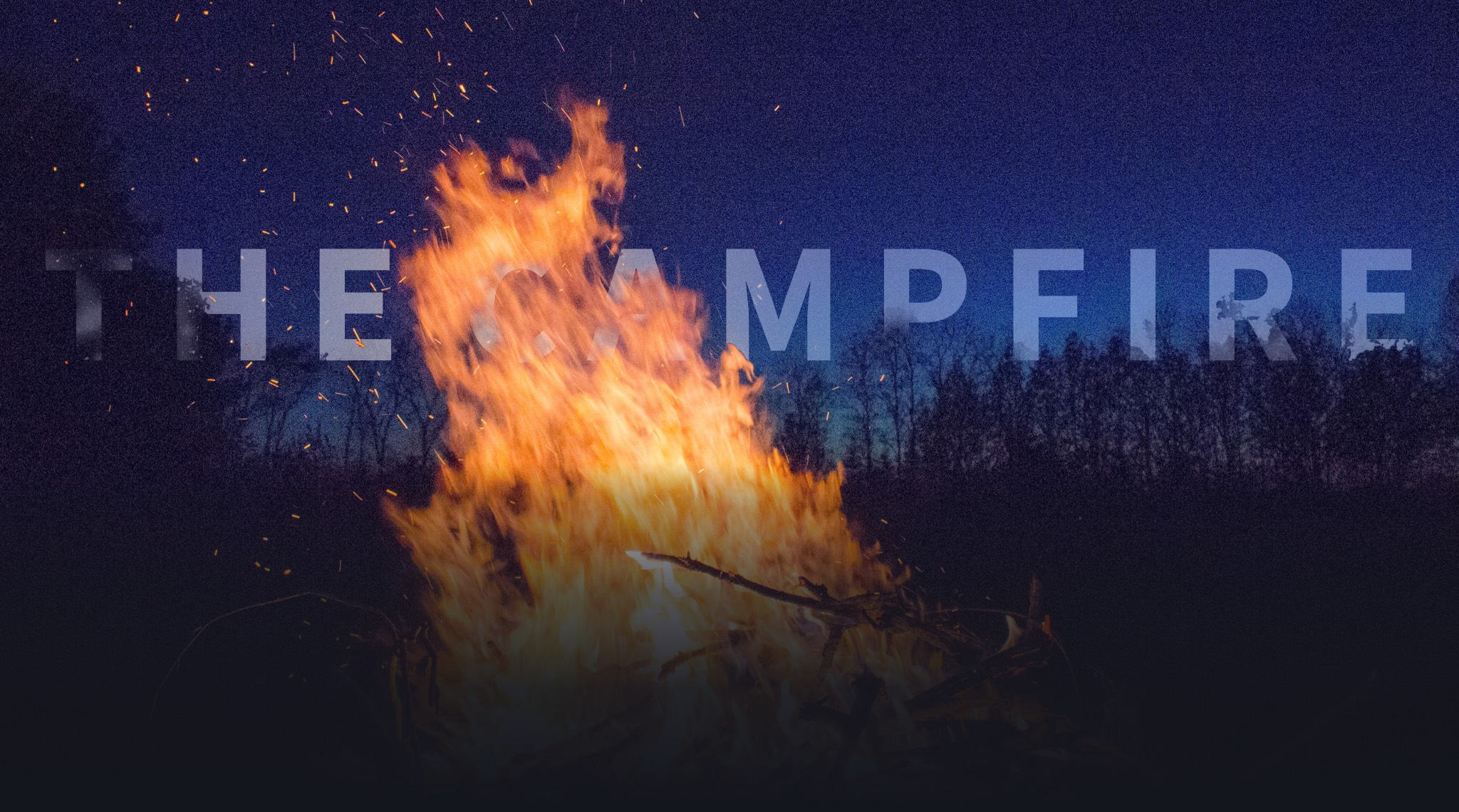
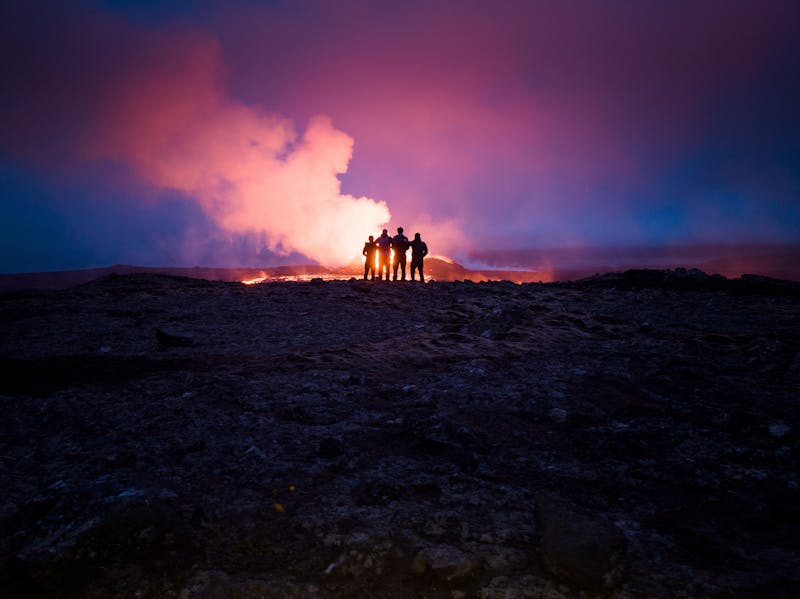
Iceland. A land of variety, texture and enormity. On our initial visit in September 2022, we were blown away by how different it was to anything we’d ever experienced before. (You can experience the places we visited previously in our other in-app Iceland collections: A Volcanic Land, Beyond Skogafoss, Vast Landscapes and An Icy Haven)
But this was a different trip in its entirety. It was spontaneous and instinctive. As soon as we heard about a new eruption on the Reykjanes peninsula, we just knew we had to go.
We never even discussed “why” we were going. As a small, bootstrapped business, we have scarce resources to throw at spontaneous trips gallivanting around the world - and here we were, booking to head out to the same island we’d visited just 10 months prior, to a volcano that could stop erupting any minute, or even be too dangerous to get anywhere near.
It was an experience-seeking punt into the fiery unknown, but deep down, we knew we had to go.
We’re glad we did. 😀
Ok - challenge one. We needed to get to the actual site.
The Icelandic Association for Search & Rescue (ICE-SAR) are a volunteer run organisation responsible for prevention and rescue work in Iceland. They proactively managed and monitored the sites of the previous eruptions in 2021 and 2022, meaning they were immediately on hand when Litli-Hrútur started erupting on 10 July 2023 (they actually are always monitoring the whole island).
We should add at this point, there are broadly two types of volcanic eruption. Explosive eruptions send gas, ash and lava high into the atmosphere, like the White Island eruption in New Zealand. These are incredibly dangerous and unpredictable.
Effusive eruptions tend to involve magma with lower viscosity, where gas can escape more easily. They cause surface lava flows, which tend to flow from a single lava dome on the surface. Litli-Hrútur was an effusive eruption.
That said, there is still considerable danger. Given the location of Litli-Hrútur a mere 30 minute drive from Reykyvik’s main international airport, on on the island’s famed “Golden Circle”, ICE-SAR have to carefully manage access to the site given the significant tourist interest.
For the early days of the eruption, the site remained closed due to wildfires and toxic gases covering the main access routes up to the volcano (an 18km round trip hike). The assembling photographers, volcanologists, and general nature enthusiasts would have to wait.
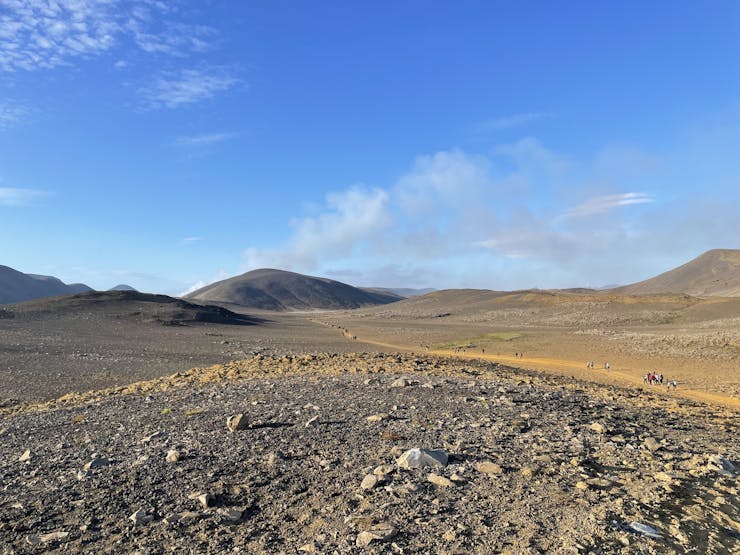
But the day after we arrived, day 7 of the eruption, the site re-opened. Cue around 2,000 visitors, making their way up the mountain, to be met with a heavy ICE-SAR presence monitoring gas levels, and providing guidance and restrictions on where to go.
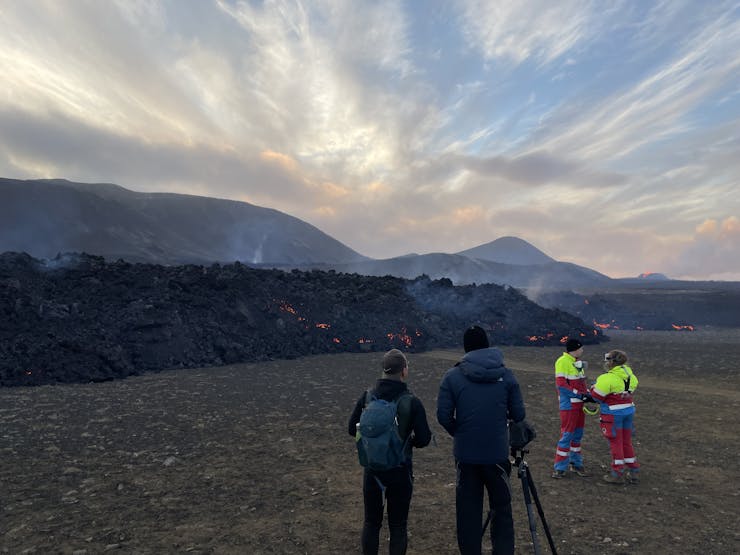
But oh my, as we rounded the corner to reveal a creaking, glowing and crumbling lava field, there up on a ridge, almost 2km away, sat nature’s fiery inferno in all its glory. 🌋
How on earth would we capture these visuals with so much company? Huge interest from tourists, plus a relatively small, confined site, presented immediate challenges to grabbing long, extended shots without someone nosing in front of the camera. Photographers need a split second, we need (at the very least), multiple minutes of clear footage.

People were one problem, what they brought with them was the other one. Drones.
The accessibility of drones, the ease of flying them, and the minimalist restrictions around drone flights in Iceland, meant this was a drone frenzy. There were often up to a dozen drones in the sky at any point, taking unpredictable paths all over the fiery vista in front of us. With flashing green and red lights marking them out in the sky, long range shots were becoming somewhat festive in feel.
But don’t worry, we’d come prepared. Not with the latest in video editing technology, or megaphones to blast away the onlookers. We came with a lifetime supply of snacks, thermos flasks and sandwiches. We’d outlast these flickering, buzzing, battery dependent friends of the night sky.
So we worked every night, from 7pm until 8 or 9am - even if it did take its toll on some of the team… 🥱
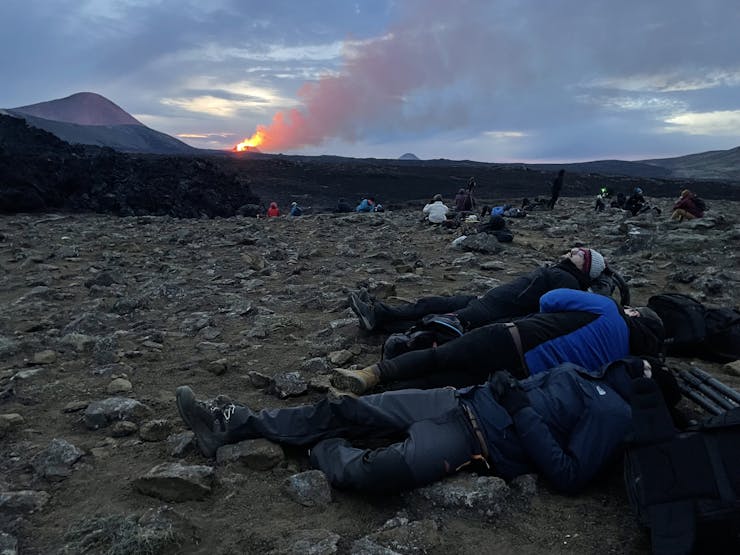
It should be said, we use the term “nights” loosely. The joys of summer on the edge of the Arctic Circle meant 1130pm sunsets and 3am sunrises. On clear nights, there wasn’t really any darkness.
If finding long visual loops is tough, spare a thought for audio. At least our camera points in one direction - the microphone does not. They are also incredibly sensitive, picking up distant footsteps, voices or traffic with incredible ease.
Usually the answer is to find remote locations, but here we were confined given the dangers of the wider site.
On our final day, sat on a bank adjacent to the volcano for almost 10 hours, we were concerned we hadn’t managed to get a single segment of audio without any interference of human noise.
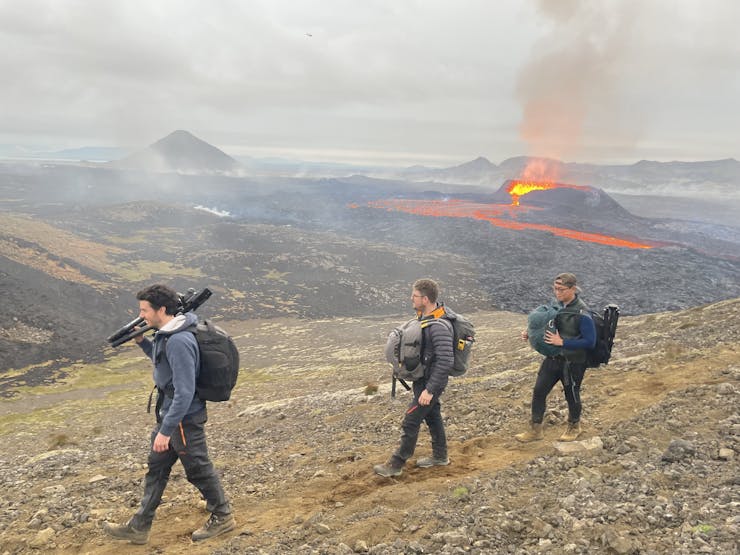
The culprits weren’t just drones - the volcano brought swathes of helicopters and fixed wing aircraft to circle the site too, offering tourists a “money-can’t buy” £500-a-head experience of the volcano. (Makes our subscription look cheap, eh?)
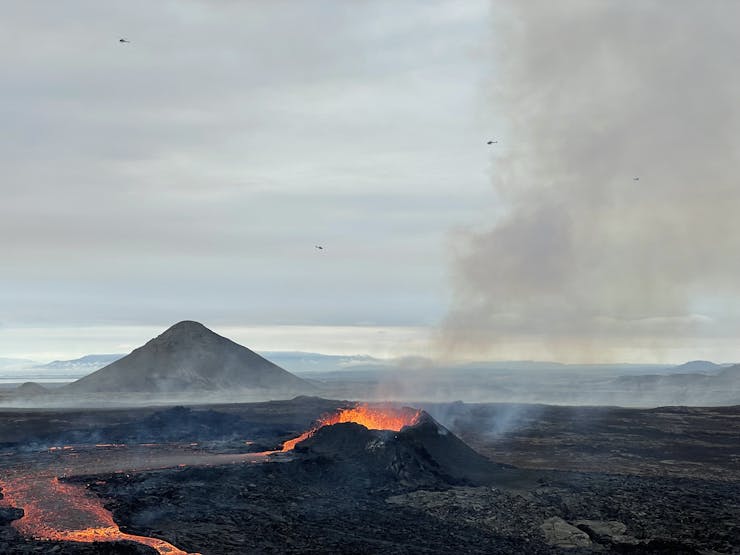
At its peak in the early evening, we counted 5 helicopters, 3 aircraft, and 4 drones disrupting our audio (and visual) experience. So much for a pure experience of one of nature’s greatest events.
We were in Iceland for 5 nights. The site opened for our second night, and a separate pathway opened up to a new (incredible) vantage point on our final night. The day we left, ICE-SAR closed the site daily from 6pm due to too many people going beyond the managed areas, meaning gaining uninterrupted audio or visuals would have been almost impossible during the busy daylight hours.
The volcano’s flows would weaken after our departure, and eventually Litli-Hrutur fell back to sleep just under 4 weeks after it burst so spectacularly into life.
Luck was on our side.
"The Fire Within", capturing the Litli-Hrútur eruption of July 2023, was released in December 2023.
Portal brings nature into your surroundings through cinematic visuals, 3D audio and smart light integration.
Explore The ExperienceUltra high def visuals, Dynamic Spatial Audio, smart light integration, award winning design and a strong stance on privacy.
Discover Our DifferenceWe take our inspiration from nature itself. Not just in recreating it, but in the entire way we run our business.
Read Our Story